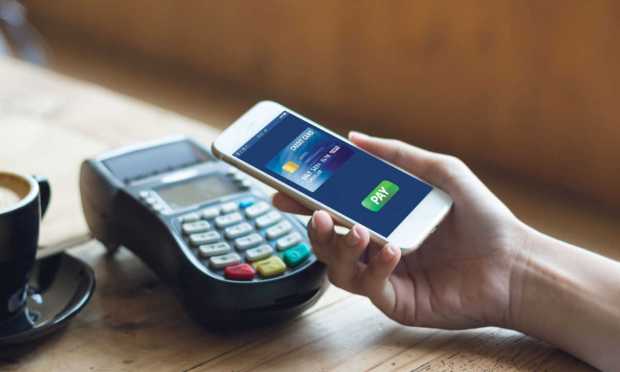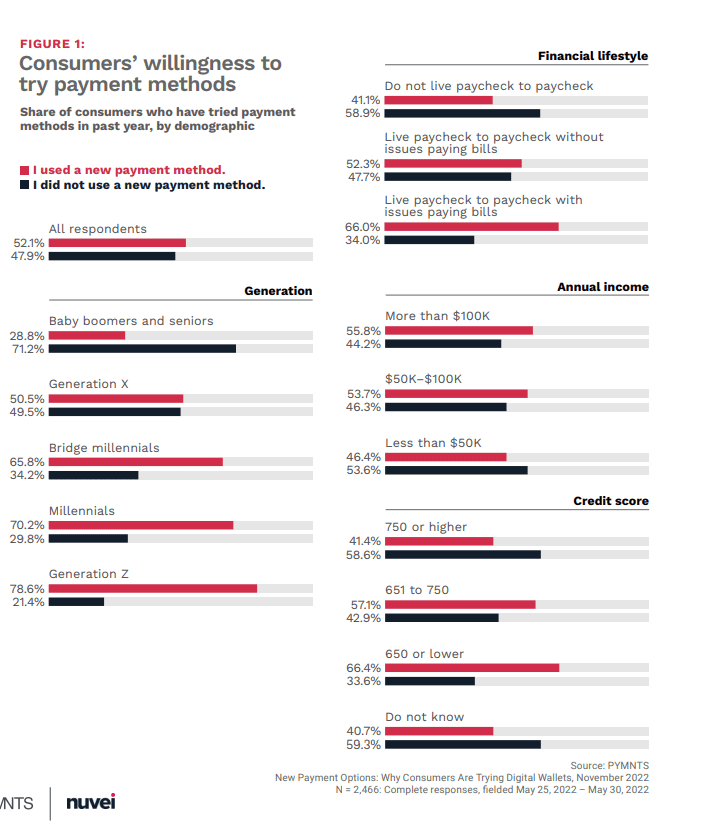Mobile Wallets Attract Consumers Looking for New Payment Options

Mobile wallet usage for brick-and-mortar purchases rose 9% globally in Q2 2022. This signals increased consumer adoption of the alternate payment method that harkens the wholesale embrace of credit cards in the 1950s.
PYMNTS surveyed 11 countries in “How the World Does Digital: The Impact of Payments on Digital Transformation.” Brazil, Japan and the U.K. saw the largest rise of in-store digital wallet purchases over last quarter. The rise in U.K. mobile wallet usage was driven by Big Tech apps like PayPal, while Brazil and Japan consumers preferred native mobile wallets. The U.S. saw a 0.07% increase in market share of digital wallet purchases from Q1 to Q2.
A November PYMNTS/Nuvei collaboration found digital wallets to be the most popular alternate purchasing method for U.S. shoppers. Fifty-nine percent of consumers who tried a new payment option in the past year used a digital wallet, and nearly two-thirds of shoppers incorporated digital wallets as a regular form of payment in the past year. Ease of use was cited as the main reason for their choice.

The digital wallet space still has room for growth and innovation: 42% of U.S. consumers surveyed are curious about the payment method but have not yet tried it. Additionally, the uptick in usage has not been uniform across demographics. With millennials leading adoption, mobile and digital wallets are gaining significant ground as a purchasing option. Seventy-one percent of the most tech-savvy consumers surveyed made an in-store purchase with a mobile wallet at least once in the previous 30 days. Basic-tech consumers (defined as owning an average of 2.4 devices, including a smartphone and PC) reported using a mobile wallet for at least one purchase during the same period.
Retailers seeking to maximize in-store sales may want to consider promotions highlighting the alternate payment option, similar to how previous generations of merchants offered credit card-focused promotions. Clumping digital wallets as just another purchasing method could be a mistake. Promoting digital wallet use could be a simple as a sign at the point of sale or could entail more complex approaches, such as retailers building their own applications to promote loyalty programs.
Just as retailers 70 years ago were initially hesitant to accept credit cards, today’s merchants may face a similar quandary when it comes to incorporating and encouraging digital wallet use. However, by failing to explore the opportunity, retailers run the risk of losing revenue in the current inflation-driven economy — which could mean disaster for all merchants, but especially small and medium-sized businesses (SMBs).
Rising consumer adoption of mobile and digital wallets could signal broad acceptance in the future. Retailers may consider getting ahead of the curve by incorporating promotions for these payment methods into their overall sales strategies.